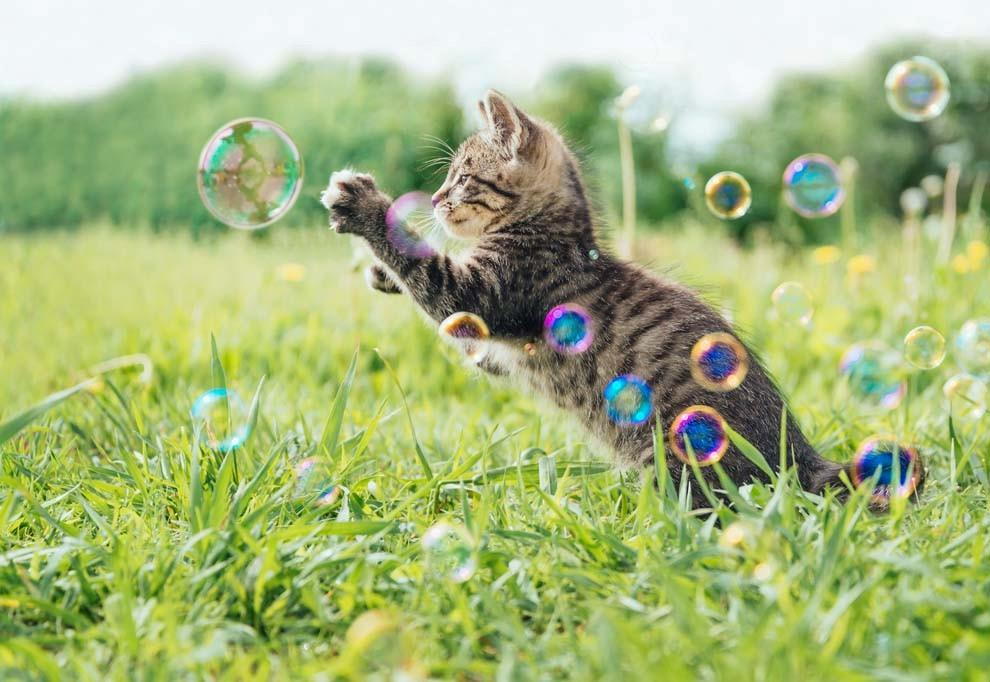
Your Cat’s Environmental Needs: Practical Tips for Pet Owners
Addressing your cat’s physical and emotional needs enhances its health and quality of life. Behavior problems are a leading cause of pets being surrendered or euthanized. These problems often occur in cats because their needs have not been fully met. Cats need resources to perform their natural behaviors and have control over their social interactions. As owner, we can enhance our cats’ health and well-being by ensuring all their needs are met in the home environment. You might ask: “What can be stressful for a beloved cat with food, water, and a roof over its head?” Read on to find out.
What are environmental needs? Environmental needs include a cat’s physical surroundings-indoors, outdoors, or both-as well as their social interactions with humans and other pets. Cats often do not express obvious signs of stress, pain, or sickness that we can easily recognize. If we are proactive and meet appropriate environmental needs throughout a cat’s life, we can potentially avoid environmental stressors that can cause unwanted behaviors and even impact medical health.
Meeting the needs of your Cat:
- Provide a safe place. Every cat needs a safe and secure place where it can retreat to so that it feels protected or which can be used as a resting area. The cat should have the ability to exit and enter the space from at least two sides if it feels threatened. Most cats prefer that the safe space is big enough to fit only themselves, has sides around it, and is raised off the ground. Good examples of safe places are a cardboard box, as cat carrier and a raised cat perch. There should be at least as many safe places, sized to hold a single cat, as there are cats in a house hold. Safe places should be located away from each other so that cats can choose to be on their own.
- Provide multiple and separate key environmental resources. Key resources include food, water, toileting areas, scratching areas, play areas, and resting or sleeping areas. These resources should be separated from each other so that cats have free access without being challenged by other cats or other potential threats. Separation of resources not only reduces the risk of competition, stress, and stress-associated diseases.
- Provide opportunity for play and predatory behavior. Play and predatory behaviors allow cats to fulfill their natural need to hunt. Play can be stimulated with the use of interactive toys that mimic prey, such as a toy mouse that is pulled across a floor or feathers on a wand that is waved through the air. Cats need to be able to capture the “prey”, at least intermittently, to prevent frustration. Early in a cat’s life introduce interactive play so they learn to avoid going after your hands and feet for play.
- Provide positive, consistent, and predictable human-cat social interaction. Cats’ individual preferences determine how much they like human interactions such as petting, grooming, being played with or talked to, being picked up, and sitting or lying on a person’s lap. It is important to remember that every cat interacts differently and to respect the cat’s individual preferences. Remember to remind guests and all household members not to force interaction and instead let the cat initiate, choose, and control the type of human contact.
- Provide an environment that respects the importance of the cat’s sense of smell. Unlike humans, cats use their sense of smell to evaluate their surroundings. Cats mark their scent by rubbing their face and body, which deposits natural pheromones to establish boundaries within which they feel safe and secure. Avoid cleaning their scent off these areas, especially when a new cat is introduced into the home or there are other changes with pets, people, or the environment of the home. The use of synthetic facial pheromones, such as Feliway, can mimic a cat’s natural pheromones and provide a calming effect in a stressful or unfamiliar situation. Some smells can be threatening to cats, such as the scent of unfamiliar animals or the use of scented products, cleaner, or detergents. Threatening smells and the inability to rub their scent can sometimes lead to problematic behaviors such as passing urine or stools outside the litter box, spraying, and scratching in undesirable areas. In some cases, stress-related illness may develop. If any of these problems occur, contact your veterinarian right away.
Addressing environmental needs is essential for the optimum wellbeing of your cat. Discuss the specific environmental needs of your cat with your veterinarian at each routine check-up. If you think your cat may have a behavior problem, schedule an appointment with your veterinarian to speak about possible solution or potential underlying medical issues that cause certain behavior changes. Your veterinarian will be able to provide you with additional information or an appropriate referral. By understanding and providing for your cat’s environmental needs, you can help your cat to live a long and happy life.
www.catvets.com
